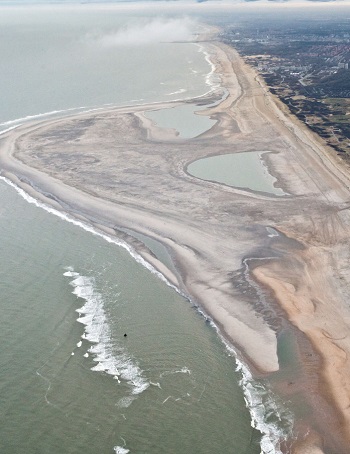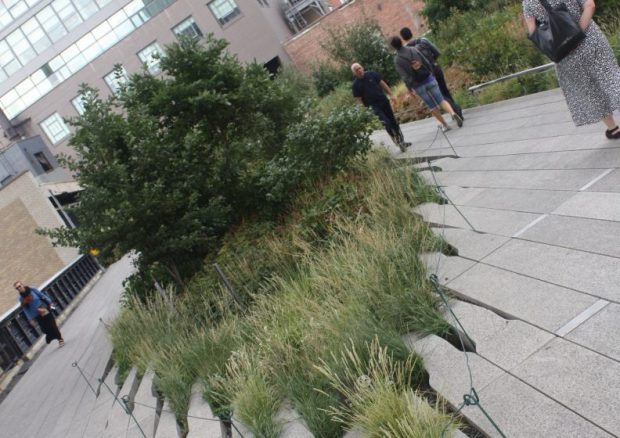
Beyond Contaminated Soils: Unleashing the Potential of Dredge Landscapes
A Paradigm Shift in Dredging Towards Ecological Restoration
The conventional notion of dredging, primarily associated with moving contaminated soils, is undergoing a revolutionary transformation. Brett Milligan, ASLA, from the Dredge Research Collaborative, sheds light on the evolving role of dredging in creating new landforms and ecological systems. The emergence of “dredge landscapes” as designed ecosystems presents unprecedented opportunities for ecological restoration, challenging the traditional view of dredging as a mere waste disposal method.
Choreographing Sediment for Ecological Goals
Understanding the Dynamic Nature of Sediment Flow in Complex Ecosystems
Sediment, inherently dynamic and diverse, becomes a powerful tool when harnessed for ecological goals. Milligan advocates studying the natural flow of sediment in rivers and deltas to orchestrate it in ways that achieve ecological objectives. However, the complexity arises from human-induced changes in ecosystems, such as channel deepening for large ships, making the process of using dredge for new landscapes highly intricate.
Dredging for Wetland Preservation: A Case in Jamaica Bay
Navigating Complex Challenges in the Face of Changing Water Regimes
Examining efforts to preserve wetlands in Jamaica Bay, Milligan highlights the urgency driven by the imminent disappearance of wetlands within a decade. Changes in water regimes, triggered by stormwater runoff and deeper shipping channels, necessitate innovative dredging solutions. The challenge lies in using dredge to restore a natural environment in the midst of significant alterations.
Designing with Nature: The Complexities of Coastal Land Loss
Hugh Roberts’ Numeric Modeling Lead Approach to Dredging Challenges
Hugh Roberts, from Arcadis, emphasizes the importance of “designing with nature” when dredging in the face of coastal land loss and sea level rise. As a numeric modeling lead, he grapples with the complexity of using dredged sediment to create habitats like wetlands. The delicate balance required arises from the need for multiple daily flushings in sea-level wetlands, presenting a challenge in finding suitable locations for their survival.
Mississippi River Delta: Unleashing Sediment for Ecological Balance
Undoing Built Systems and Allowing Nature to Guide Sediment Redistribution
Roberts details the White Delta diversion project in the Mississippi River delta, aiming for the most efficient interventions to spread sediment across the delta. The project seeks to undo the traditional containment system of the river and enable natural sediment deposition where ecologically needed, moving away from a rigid “plumbing diagram” approach.
Sand Engine in the Netherlands: A Natural Approach to Coastal Protection
Dredging That Works with Nature to Create Dynamic Landforms
Highlighting the Sand Engine project in the Netherlands, Roberts showcases an innovative approach to coastal protection. The Dutch use dredging to create a changing landform that distributes sand along the coast, allowing nature to spread it where needed. This contrasts with the conventional practice of pumping sand directly onto eroding beaches, providing a sustainable solution that increases resilience through natural processes.
Dredging Technologies: Paving the Way for Ecosystem Restoration
Exploring Cutter Suction Dredges, Hopper Dredging, and Their Ecological Applications
Chris Dols, from Great Lakes Dredge and Dock, introduces various dredging technologies, including cutter suction dredges and hopper dredging, each with unique applications in restoring ecosystems. These technologies, turning mud into slurry and vacuuming up material, respectively, contribute to the creative use of dredged material for ecological purposes.

Landscape Architects Embrace Dredging as a Design Opportunity
Sean Burkholder’s Vision for Reusing Sediment and Enhancing Educational Opportunities
Sean Burkholder, ASLA, advocates for landscape architects to view dredging as a genuine design opportunity. In the Great Lakes region, where only 25% of sediment is reused, Burkholder envisions a shift from treating contaminated sediment as waste to creatively using it in landscape architecture. Moreover, he sees existing dredged landscapes as valuable educational resources, urging the creation of access and interpretation for these legacy sites.
DredgeFest: A Gateway to Dredging Insights
Brett Milligan’s Annual Initiative for Dredging Enthusiasts
For those eager to delve deeper into the world of dredge landscapes, Brett Milligan organizes DredgeFest annually. This initiative serves as a platform for sharing knowledge, fostering discussions, and exploring the evolving landscape of dredging, further propelling the movement towards ecological innovation.





